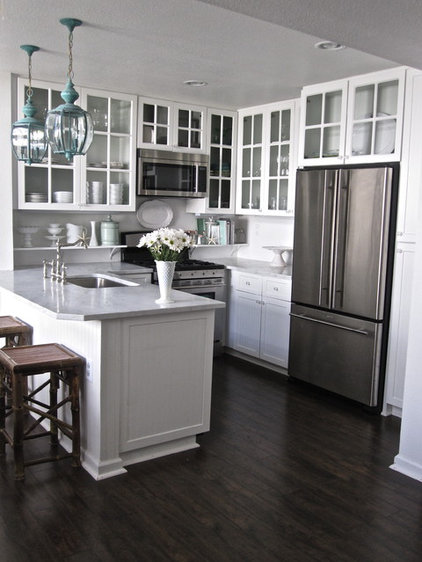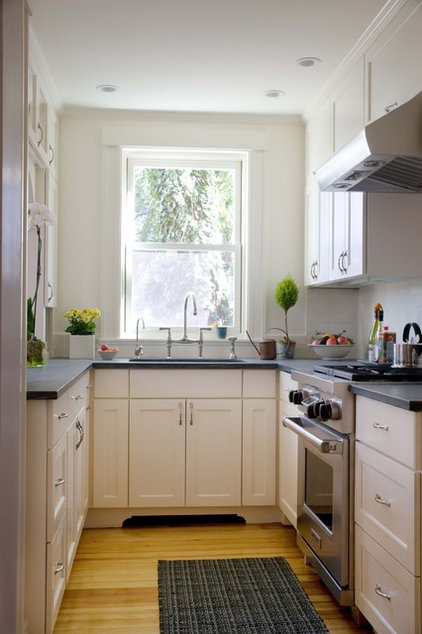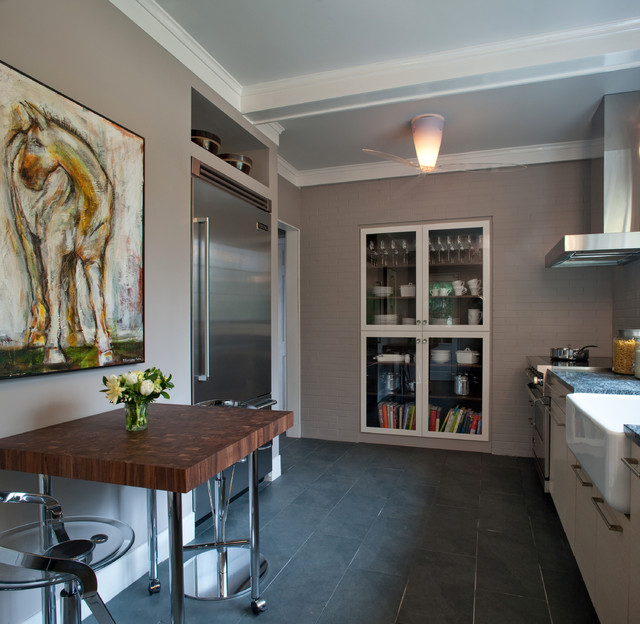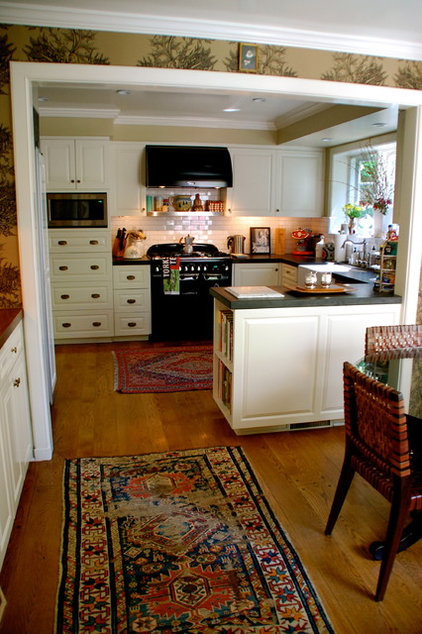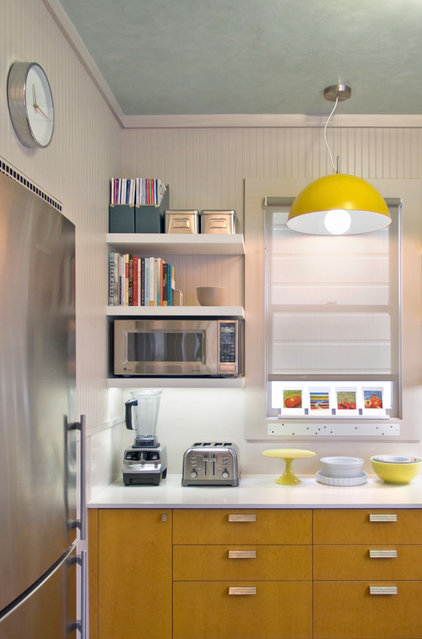Creative Spaces: Once a Garage, Now an Art Studio and Office
Thursday, September 12th, 2013Every design choice in my house is dictated by budget. I’m a work-at-home freelance artist raising two children, and every room has come together using finds from thrift stores, Craigslist and even bulk trash. I frequently work on large-scale art pieces, and my office, which doubled as a guest room, was just too small. I needed more square footage.
Armed with a strict $300 makeover budget, my husband and I reconfigured some of our rooms over a weekend, turning our converted 19- by 19-foot two-car garage into an art-making haven. This called for getting creative and making do with existing furniture pieces from elsewhere in the house. The total cost of my garage makeover, including two gallons of paint and four dining chairs, was $274.23.
BEFORE: Previously we used this space, the former garage, as a TV room and catchall for toys. The whole room felt dingy and dim. My husband used to call this “the room of squalor and filth.”
The previous homeowner had converted the garage, filling in the garage door, installing carpet and lining the walls with faux wood. Since he did it himself, there’s no insulation, and the walls don’t go all the way to the floor in places, making me contend with spiders and geckos at times. The homeowner said it cost him about $600 to convert the garage a few decades ago.
AFTER: The space is now a welcoming studio where I can work on art pieces, freelance writing and photography, and host workshops and classes.
The carpet is laid directly onto a gently sloping cement foundation, which makes it interesting for lining up artwork on the walls. I painted the walls Black Suede by Behr, because I love dramatic cocoon-like spaces.
Tip: Most art studios have bright white walls, which provide extra light and help to keep the focus on the art. But black can also be a wonderful backdrop for artwork.
Source: Houzz.com





